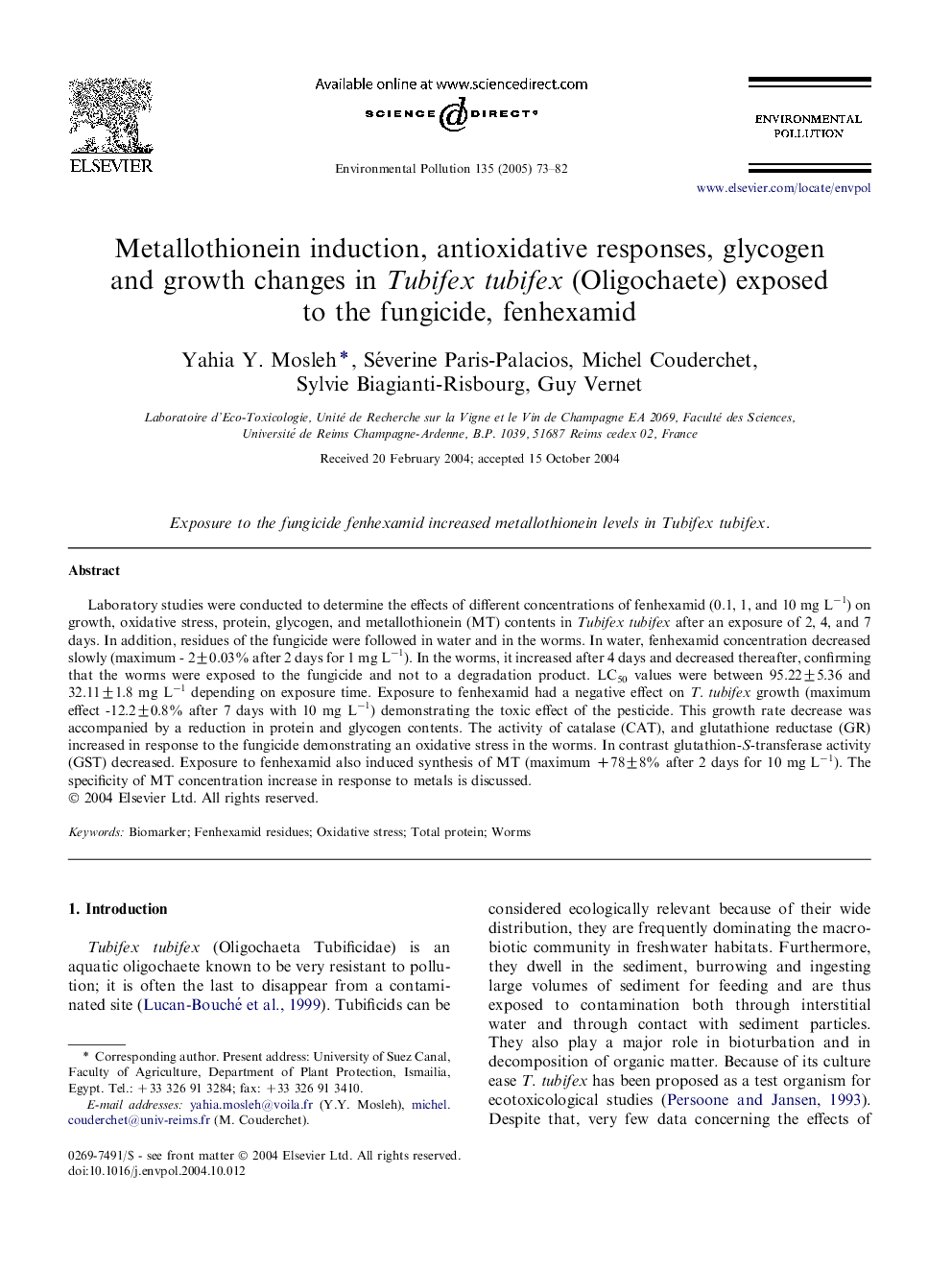| Article ID | Journal | Published Year | Pages | File Type |
|---|---|---|---|---|
| 9456629 | Environmental Pollution | 2005 | 10 Pages |
Abstract
Laboratory studies were conducted to determine the effects of different concentrations of fenhexamid (0.1, 1, and 10 mg Lâ1) on growth, oxidative stress, protein, glycogen, and metallothionein (MT) contents in Tubifex tubifex after an exposure of 2, 4, and 7 days. In addition, residues of the fungicide were followed in water and in the worms. In water, fenhexamid concentration decreased slowly (maximum - 2±0.03% after 2 days for 1 mg Lâ1). In the worms, it increased after 4 days and decreased thereafter, confirming that the worms were exposed to the fungicide and not to a degradation product. LC50 values were between 95.22±5.36 and 32.11±1.8 mg Lâ1 depending on exposure time. Exposure to fenhexamid had a negative effect on T. tubifex growth (maximum effect -12.2±0.8% after 7 days with 10 mg Lâ1) demonstrating the toxic effect of the pesticide. This growth rate decrease was accompanied by a reduction in protein and glycogen contents. The activity of catalase (CAT), and glutathione reductase (GR) increased in response to the fungicide demonstrating an oxidative stress in the worms. In contrast glutathion-S-transferase activity (GST) decreased. Exposure to fenhexamid also induced synthesis of MT (maximum +78±8% after 2 days for 10 mg Lâ1). The specificity of MT concentration increase in response to metals is discussed.
Related Topics
Life Sciences
Environmental Science
Environmental Chemistry
Authors
Yahia Y. Mosleh, Séverine Paris-Palacios, Michel Couderchet, Sylvie Biagianti-Risbourg, Guy Vernet,
